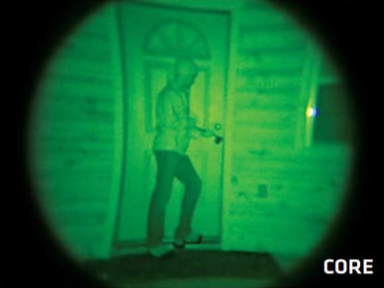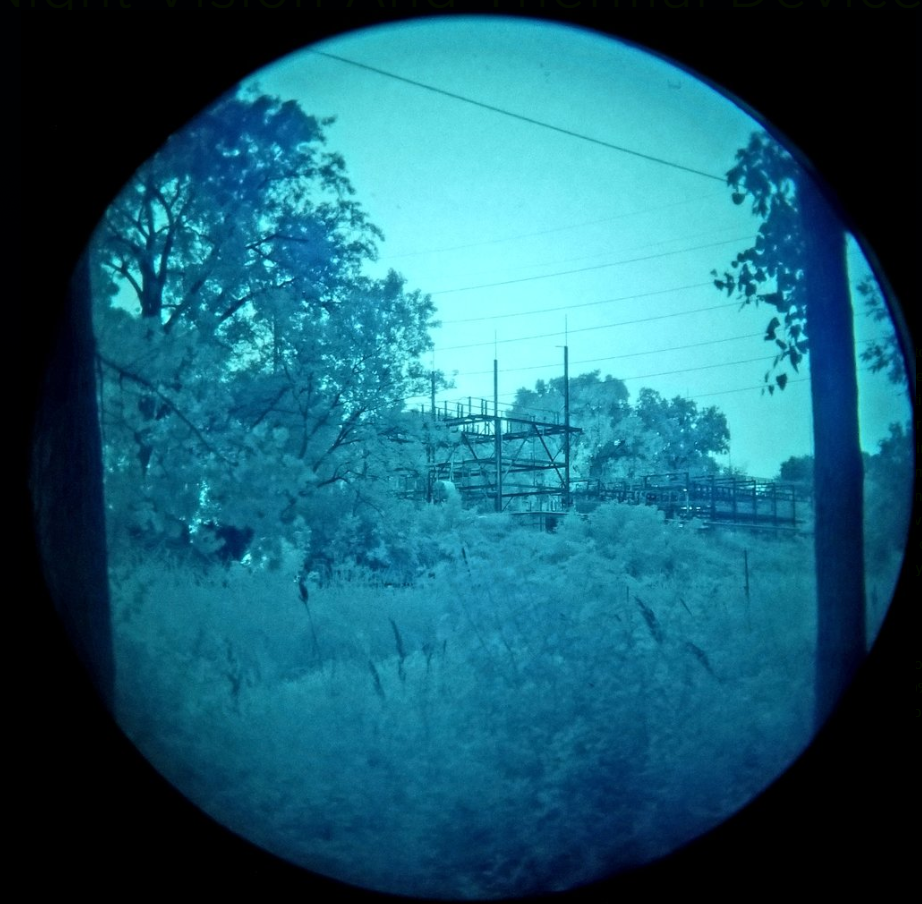Light Intensification principle
As the name suggests, light intensification uses and amplifies existing residual light to recreate an image that can be used by the human eye in low light conditions.
This assumption breaks a myth that many people believe before embarking on night vision "You can see in the dark".
Indeed, we can see in the dark with a night vision device, but not in absolute darkness, quite simply because if the tube, whatever it is, has no residual light to amplify, it will not be able to nothing to restore.
As the name suggests, light intensification uses and amplifies existing residual light to recreate an image that can be used by the human eye in low light conditions.
Let’s come back to the principles of how a tube works. As shown in the image below we find the three elements that make up a tube (apart from the power supply of the tube not shown here): The Photocathode, The MicroChannel Plate (MCP) and the phosphor screen
%20How%20Night%20Vision%20Works%20-%20YouTube.png)
Image amplification is then carried out in 3 steps:
Step 1: The residual light is captured in the form of photons (light particles) by the photocathode and transformed into electrons (electrical particles).
Step 2: The electrons pass through the MCP and are multiplied (by a factor which depends on the tube) by passing through microchannels which constitute the MCP.
Step 3: The electrons once multiplied will hit the phosphor screen (which can be green or white) which will then generate photons (therefore light) which represents the exact image of what the tube observes, and which this time can be used by the human eye.
Night Vision history
Light intensification technology was born for military purposes during World War II and developed in the 1960s with the arrival of generation 1 of light intensifier tubes (which we will refer to below as " tube ”).
It was not until the 1970s that the second generation hits appeared. Generation 3 will arrive in the 80s, mainly in the United States.
All of these tubes were primarily used first by the armed forces for night navigation in tanks or helicopters that incorporated periscopes with night vision modes. The Photocathode, The MicroChannel Plate (MCP) and the phosphor screen..
The generations
Gen0
Developed during World War II and little used, this generation has never been officially defined because it and did not work by amplification of light.
Devices designed under gen 0 were simply glasses sensitive to near-infrared light. They therefore required an infrared (IR) light supply at all times to function, which means substantial equipment (Large power supply module, large infrared lighthouse, and large telescope) as can be seen in the photo below.

Gen1 (1000 hours lifetime)
The first generation to use the principle of amplifying light to function and therefore not requiring the use of an IR light source all the time. Devices of this generation are passive and in most cases have a sharp center of image and distorted peripheral vision.
Still available today, this generation has evolved a lot and has been modernized, in particular with the arrival of Gen1 Core (Armasight trademark), which provides better resolution and reduced peripheral distortion.

La Gen2 - durée de vie de 2000 heures à 5000 heures
La gen2 apporte un changement majeur en terme de technologie en utilisant une "Micro Channel Plate" pour augmenter de manière significative le gain des tubes (voir plus bas le rôle de cette MCP).
En plus de cela, elle s'affranchit de la distorsion optique des Gen1 et reproduit une image parfaitement fidèle.
La désignation Gen2+ : est une désignation commerciale, indiquera souvent des tubes avec une photocathode S20 ou S25 “extended red” qui permettent une meilleure utilisation sous un ciel étoilé.
Attention sans cette mention spécifique sur une fiche technique, le tube n’aura pas les performances attendues de ce qu’on considère comme une Gen2+.
Super Second Gen (SSG) - durée de vie 15000 heures : appelé aussi SHP hypergen supergen, désigne des tubes de deuxième génération avec une photocathode à très forte sensibilité. Ces tubes haut de gamme concurrencent directement les derniers tubes de troisième générations et utilisé entre autre aujourd'hui par l’armée française.
Exemple de la vue depuis un tube SSG (tube Echo de Photonis).

La Gen3 - durée de vie 15000 heures
Utilisant la même architecture et principe de fonctionnement que les tubes de génération 2, la Gen 3 se différencie de la génération 2 par l’utilisation d’une photocathode (le capteur physique de lumière) en Arsenide de Gallium (GaAs).
Cette photocathode a permis aux premières Gen3 de se démarquer par rapport à la Gen2 de par sa sensibilité et son gain plus élevé mais a un impact négatif dans certaines conditions en créant un Halo lumineux autour d’une source intense de lumière, empêchant de voir ce qu’il y a derrière cette source lumineuse.
La Gen4 : Est une génération qui n'est pas encore réellement définie. Il s'agit de tube de 3eme génération n’ayant plus de film de barrière aux ions positif. Le groupe L3 (anciennement Litton) est précurseur dans ce domaine, mais il n’est pas certain que les tubes aient une durée de vie suffisantes pour répondre aux spécifications de la gen4.
